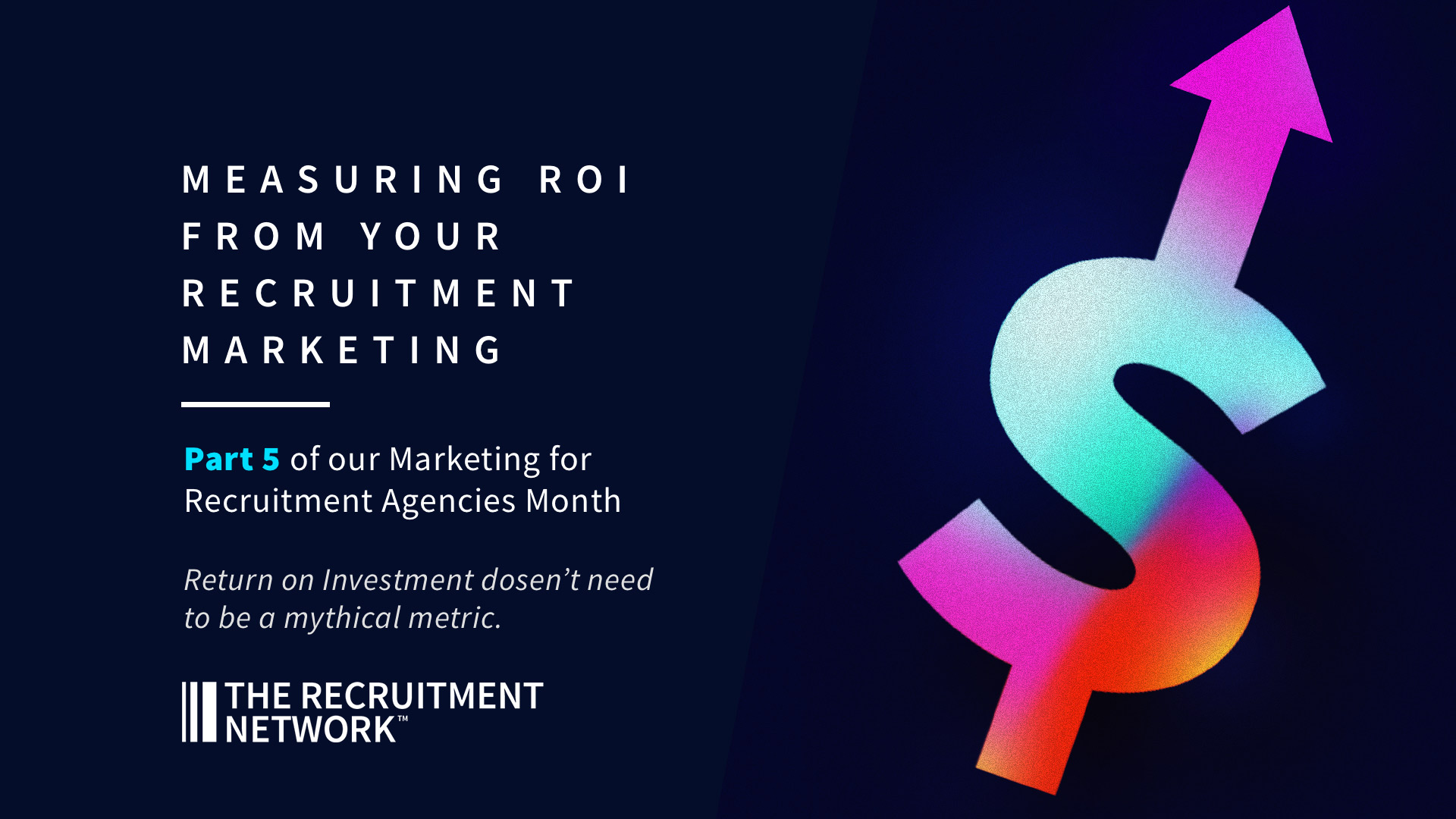Return on Investment in marketing needn’t be a mythical metric that seems impossible to achieve, we look at how you can effectively report on the sum of your efforts and campaigns.As the world of recruitment becomes ever more marketing and social selling led, how do we as recruiters begin to measure the ROI (Return on Investment) from the various marketing initiatives we run?
This is an important question to not only justify investment we put in currently (time, resources and financial) but also to be able to decide where we should focus our efforts moving forward.
However, according to a study on Marketing ROI by the Lenskold Group, around 60% of business don’t track or measure the ROI, thus making the whole process blind.
Marketing and Social Media activity is typically fairly easy to report on at a general level, but often those reports stop at activity and first level impact, not the actual contribution they make to the bottom line profitability of a business.
The challenge we have with measuring marketing impact is that in general terms, it takes multiple touches to turn a potential prospect into a customer, so we can look at the outcomes a series of marketing touches / campaigns have but it is often a lot harder to allocate ROI to any one specific marketing touch.
When you think of ROI, consider everything related to that campaign so you get a true reflection of the net value of your efforts. These could include:
- Technology costs (i.e. marketing platforms and lead generating tech)
- Advertising costs
- Resource costs (ie people’s hours)
- Printing costs
- Management time
The calculation then becomes very simple:
Revenue Generated (RG) – Total Campaign Costs (TCC) = Net ROI
Then divide the Net ROI by the TCC to get a % ROI
To be able to effectively calculate ROI, you first need to understand what your specific goals or targets are around certain Key Result Areas (KRAs) aligned to the different stages of a marketing funnel.
For example:
Above the Funnel
How much traffic are you generating and attracting to your website, how many leads are you generating through landing pages, how many new interactions are you having with potential customers on social media etc.
In the Funnel
How many customers have completed some form of Call to Action (i.e. they have done something you have asked them to do like complete a form or responded to an industry specific survey) etc.
Ready to Close
How many customers requested some “further information” following a trade show or event etc., how many have requested and received some form of value add from you (like a salary survey or some specific data) etc.
Closed
How many have converted into a qualified lead for one of your sales team / consultants (requested a call back or meeting), how many have given you a job opportunity to work on
For each of these, set a specific Minimum Standard that you are willing to accept. In other words, what does the minimum level of success look like (best-practice) for each KRA? This could, for example, be a minimum % ROI of 400% on any campaign – anything less than this is deemed ineffective. If you are seeing that any specific marketing campaign or channel is way off the mark from that Minimum Standard, then drop it and focus your time and money elsewhere.
Once KRAs have been set, you can then identify specific campaigns to run that drive potential / prospect customers through each of these stages over a period of time, measuring conversions through each stage of the funnel as you go. The more defined and controllable your Calls to Action are, the easier it will be to track. Marketing professionals should then track every element of the marketing funnel, based on how much time / money was invested into that particular campaign at each stage, how much conversion they are getting and ultimately how many of those converted at the bottom of the funnel translate into placements (and at what value).
If this is measured regularly and consistently, you can start seeing trends in such areas as:
- Which channels, and the specific activity within those channels, generate the most interest at the of the funnel?
- Which channels, and the specific activity within those channels, generate the highest quality of lead (ie are they converting to customers) at the top of the funnel?
- Which channels, and the specific activity within those channels, have the quickest conversion?
- Which channels, and the specific activity within those channels, generate the highest value opportunities?
- What time slots (days of the week, particular times in a day) get the best traction across different marketing channels?
By regular (ie monthly) monitoring of the conversion results (which will require you to link the marketing funnel as seamlessly as possible to your CRM) you are then able to evolve your activity according to where you are getting the best ROI.
Remember, don’t get excited by volume, but instead by quality.
In other words, the amount of visitors you get to your website, the number of Twitter followers you have, the number of views you have on a blog are all reasonably irrelevant. If anything, this creates a false economy where we are busy making noise, but clearly the wrong noise and/or to the wrong audience. What is relevant is the how many of those actually progress to the next stage of the marketing funnel and then out the bottom into actual revenue generated.
Share :




